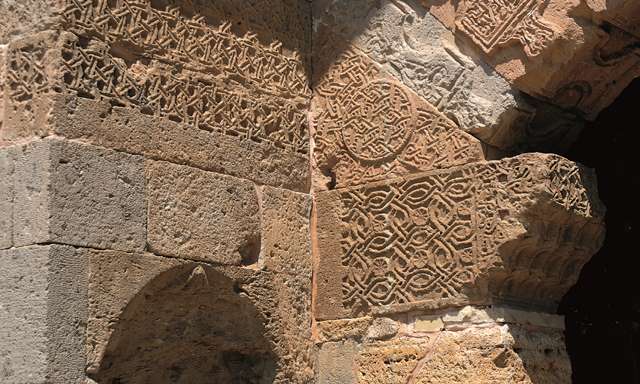The Seljuk Han of Anatolia
About this website....
This website contains information on caravanserais (known in Turkish as hans), an important group of buildings built in Turkey during the Seljuk era of the 13th century (1071-1306).
The Seljuk period was undoubtedly one of the most intensively creative periods in the history of the Islamic world. It displayed splendid achievements in every artistic field. The Seljuk period in the history of art and architecture extended for about two centuries, from the conquest of Iran and Central Asia in the second quarter of the 13th century to the establishment of the Ilkhanid (Mongol) Dynasty in the second quarter of the 13th century. This site will focus on the Seljuks of Anatolia, with the centers of power and artistic creation residing in the major Seljuk cities of Konya, Afyon, Kayseri, Sivas and Tokat. Yet it was in the countryside that a major architectural development occurred: the construction of a system of hans, or overnight way stations for merchants and travelers.
The objectives of this site are to:
- serve as an introduction to the Turkish han of the Seljuk era
- furnish a descriptive list of hans currently standing, as well as those in ruins
- provide resources for those who wish to study the architecture of hans
- generate a greater appreciation of the art, history and architecture of the Seljuk period
- offer information for planning a visit to a han
It is the intention of this site to foster a discovery and greater appreciation of the universal historical, social and artistic value of the Seljuk caravanserai. This is a general introduction to the subject, destined for a general audience. A bibliography is included for further reading on the subject should the reader wish to seek more exhaustive information, and the references consulted for each han are listed at the end of its description. The site presents an overview of the hans that are currently standing, in good condition and that can be visited, as well as those in ruins. This site does not include hans built in the Beylik or Ottoman eras.
In as far as possible, current photos of the restored hans are shown. The Turkish government has undertaken extensive architectural restoration endeavors over the last 5 years, but the photos on this site try to depict the current state of the han as well as its pre-renovation condition. These are included to show the original fabric of the buildings, often masked by the restoration, and, as such, are of interest for historians. Photos are by the author unless indicated otherwise.
The Turkish Government has submitted a request to UNESCO (United Nations Educational, Scientific and Cultural Organization) that the "Seljuk Caravanserais on the route from Denizli to Doğubeyazit" be placed on the World Heritage List of Monuments, due to their participation in the interchange of human values and the arts, their exceptional testimony to the cultural traditions of a civilization which has disappeared, and their illustration of an outstanding type of building.
This website, created in 2001, was the first attempt to present an overview of Seljuk hans to the public at large, and the first in English. This website strives to consolidate the work of the past and present scholars to present it in an ongoing and up-to-date presentation. It is hoped that this website will inspire the architecturally curious from all over the world to visit and appreciate this outstanding corpus of world architecture.
The author and webmaster of this site is Katharine Branning. The site reflects the yearly field work done by the author, a librarian, art historian and writer, in the years 1978 to the present. The author would like to thank the photographer, author and filmmaker Ibrahim Divarci of Konya, Turkey, for his ongoing support and for his generous permission to use his photographs on this site, as well as those of the Konya writer Ahmet Kuş.
![]() Please
send comments and suggestions!
Please
send comments and suggestions!
last update: September 2, 2025
|
|
 |
©2001-2025, Katharine Branning; All Rights Reserved. No part of this site may be reproduced in any form without written consent from the author.